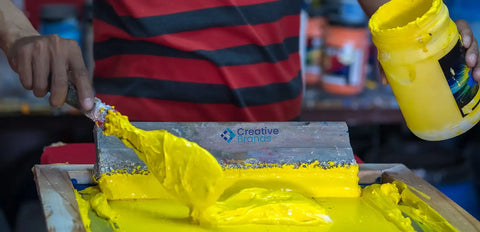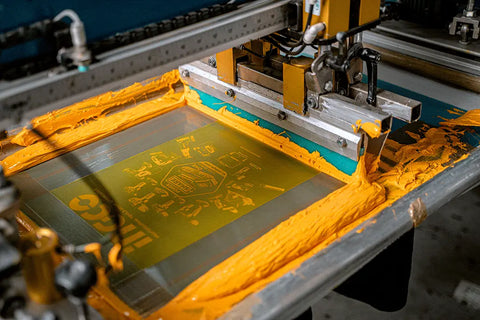
Screen printing is a popular method of branding in the promotional merchandise industry. It involves creating a stencil of the design that is to be printed, and then using that stencil to apply ink onto a substrate, such as a t-shirt, bag, or other promotional item.
The process starts by creating a screen, which is typically made of mesh stretched over a frame. The stencil is then applied to the screen, and the ink is placed on top of the screen. A squeegee is used to push the ink through the mesh and onto the substrate, creating the final printed design.
Screen printing is an efficient and cost-effective method for producing large quantities of promotional items, as it allows for high volume production with minimal setup costs. It is also very versatile, as it can be used to print on a wide variety of materials, including textiles, plastics, and paper.
One of the main advantages of screen printing is that it produces high-quality, durable prints that are resistant to fading and wear. The ink is applied in a thick layer, which helps to ensure that the design remains vibrant and visible even after repeated use or washing.
Overall, screen printing is an effective and reliable method of branding in the promotional merchandise industry, and it is widely used by companies of all sizes to create promotional items that help to increase brand awareness and promote their products or services.
Advantages of screen printing:
-
Can brand up to A3 size: This is a large size, and it allows for the creation of detailed and complex designs that can be seen from a distance.
-
Good turn-around time: Screen printing is a relatively fast process, and it is possible to produce large quantities of promotional items in a short period of time. This is especially useful for companies that need to meet tight deadlines or have last-minute branding needs.
-
Shows small words and fine detail better than embroidery: Screen printing is capable of producing very fine detail, making it ideal for printing small text or intricate designs. In contrast, embroidery may not be able to reproduce small details as clearly.
-
Limited Half-tones are possible: Half-tones allow for the printing of gradations of colour, allowing for the creation of more subtle and nuanced designs. However, there are some limitations to the use of half-tones, and they may not be suitable for all designs.

Limitations of screen printing:
-
Maximum of 6 colours available: Screen printing is limited to a maximum of 6 colours, which may not be sufficient for some designs. However, it is possible to print up to 8 colours under certain conditions.
-
Some items can't be screen printed: Some materials, such as those that are too soft or too uneven, may not be suitable for screen printing.
-
Some products are limited to 1 colour only: Depending on the item and the design, it may be necessary to use only one colour of ink. This can limit the complexity and detail of the design.
-
Texture of item will affect branding: The texture of the item being printed on can affect the final result. For example, a rough or uneven surface may make it difficult to produce a smooth and even print.
-
Cannot brand on and over seams & zips: It is not possible to screen print on seams or zips, as the stencil may not lay flat on these areas.
-
Minimum height for text in lowercase is 2mm: There is a minimum height requirement for text in lowercase letters, which can limit the size and placement of certain design elements.



